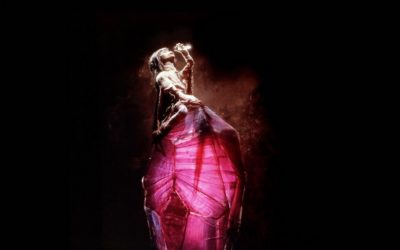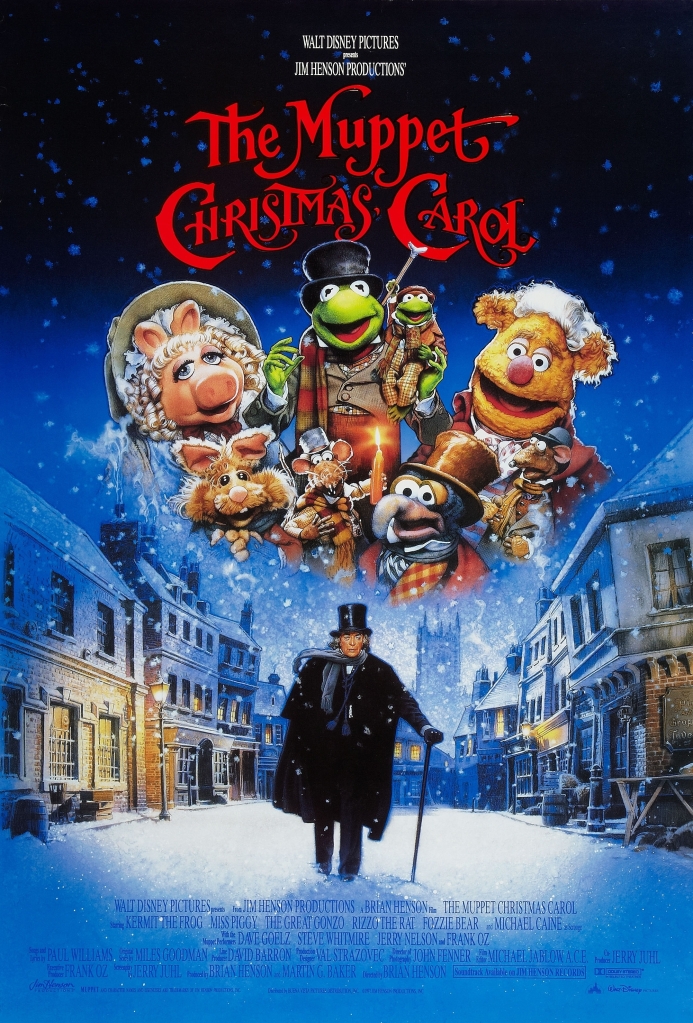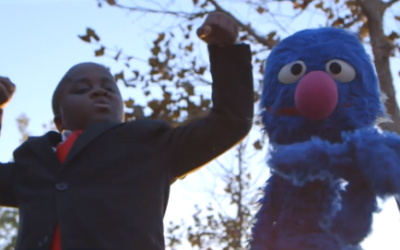
JD Hansel – My first time seeing the Jim Henson statue at the University of Maryland, where I would later go to college, was when I took part in National History Day for middle school, which held its national-level competition in the building where the iconic statue sits. I took it for granted that any adult in the building would surely have some inclination of who Jim Henson was, and I fancied myself quite clever for choosing a topic for my project that tied into the school’s Henson connection: animatronics. About half of my project detailed Walt Disney’s innovation of Audio Animatronics, and about half focused on the Jim Henson Creature Shop’s involvement in reinventing the art for the era of special effects cinema. The judges took some time to look through my work before asking me any questions, but one of them shocked me by asking the strangest question I’ve ever heard: “What exactly is the difference between Walt Disney and Jim Henson?”

This was not a request to compare and contrast the two men or their respective brands, or at least it didn’t seem to be; it was literally an existential confusion about how the two people were in fact different human beings. There really is no good answer except to say that Walt Disney was one man and Jim Henson was another, as one would say if asked why Abraham Lincoln wasn’t George Washington. I’d like to think I mustered a decent explanation of how they worked in two different fields, used animatronics for different purposes, created different companies with different characters, etc., but the judges didn’t think I handled that particular question well, and it counted against me. That was over ten years ago, and I’m still wondering, how does one explain the difference between these two creators? More precisely, why wasn’t Jim Henson Walt Disney? That is, how is it that both creators were beloved around the world for their fanciful, family-friendly brands, yet one empire kept expanding while another split in three?

The earliest comparison between the two that I’m aware of can be found in the 1984 documentary Henson’s Place, in which the narrator notes that Henson had created more beloved fictional characters than perhaps anyone since Walt Disney. It was in the same year that Henson was considering buying the Walt Disney Company when it was about to be broken up by financier Saul Steinberg, but it never came to pass. Henson was less interested in owning than he was in doing. Years later, it became clear to the new leaders of the Walt Disney Company (Michael Eisner, Frank Wells, and Jeffrey Katzenberg) that Henson would be perfect as the new “Walt” for their company. That is, they would continue to run the business side of things while Henson would the creative force that shaped their body of work, essentially serving the function for the company that John Lasseter would serve later. Henson was such a fan of Walt Disney’s films and theme parks that it made sense, and I think Henson would have made a good figurehead for the studio since he seemed to have most of the good qualities of Walt Disney with few of the bad qualities.
Disney’s family-friendly “Uncle Walt” persona was not unlike Disney’s natural demeanor in that Henson did not smoke or swear the way Disney did. Henson was adored by his colleagues and staff, and he seemed to get along with just about everyone. Disney was usually angry, while Henson, for better or worse, couldn’t really understand anger. His artistic ambitions were great, but he was less of a control freak –– Henson was very trusting, while Disney demanded absolute authority.

With that said, both had a knack for creating icons and an intuition for how to tap into American nostalgia, each reimagining vaudeville comedy in a way that translated perfectly to the screen and took on a timeless quality. This was met with an inability to clearly convey what they wanted from their writers and performers, and a generally chaotic creative process that often produced more great scenes than great storylines. Perhaps what made them most alike was the way they made everyone around them desperate to please them, particularly since neither man was inclined to offer much praise for good work –– a quality that drove Disney’s staff mad, and quite frankly, I think Henson’s staff was getting there. Disney and Henson both attempted the same tactic to calm this situation by giving their employees bonuses based on a subjective feeling for what the employee was worth, and for both of them it backfired. For Disney, it was a major development in the timeline leading up to the animators’ uprising, but for Henson, it was close enough to the end of his life that he would never see his staff feel for him the way Walt’s staff felt. (This may be a highly controversial take, but given the way almost everyone who worked for Henson in the late ‘80s was extremely jealous of the attention he gave to anyone else on his staff, I think enough of his workers were so angry and stressed that a reckoning would have surely come in the 1990s had Henson lived long enough, and the Henson name would have been tarnished as a result.)

Given their similarities, and given how close we were to living in a world where the Disney library was part of the Jim Henson Company, it strikes me as incredibly strange that Disney is still, and probably always will be, the much bigger name. Some would just attribute it to mindset, with Disney focusing on growing and expanding the company while Henson was supposedly content to keep things small, but I think that’s an oversimplification since Henson split his time between two continents trying to manage multiple international children’s brands, his main Muppet franchise, his directing career, and a visual effects company. Henson definitely kept his company growing and expanding. Another factor may have been timing and age of death –– Disney lived to be 65, Henson died at 53. Even still, by the age of 53, Disney had created most of the characters and films for which he is best known, had expanded into television, and had started building his theme park, with the only significant projects in his later years, at least as far as his legacy is concerned, being Mary Poppins and his World’s Fair attractions. The real question is what Disney was able to do in 53 years that Henson, rightly or wrongly, didn’t.

It seems Disney’s success came in waves. He started multiple failed companies in his early years, found mild success in his Oswald the Lucky Rabbit cartoons, then lost Oswald, then created Mickey. Once Mickey’s popularity started waning, he had “Three Little Pigs” and Donald, and then he had Snow White, which may have been the peak of his success. Then the war started, Pinocchio and Fantasia bombed, and he struggled to stay afloat for almost a whole decade. Then, all at once, his animated films found their groove again, he figured out how to produce a large quantity of affordable live-action films, and he mastered television, giving him the sturdy foundation he needed to venture into theme parks. After the success of Disneyland, his career didn’t really face any threats after that, while Henson’s arc was more disheartening. He started with mild success with Sam & Friends and commercials, found greater success with Sesame Street, found even greater success with The Muppet Show, and then gradually everything rolled downhill over the course of a decade until The Jim Henson Hour was cancelled after six episodes.

While many factors shaped these arcs, it ultimately comes down to the tools these creators used and the particular medium in which each of them started. Disney had film and animation; Jim had television and puppetry. Television does not make the same kind of profits as film; puppetry was never as popular in America as animation. More importantly, television forces creators to become invested in long-term projects that keep using the same small set of characters, while film encourages making new casts of characters every year. Henson spent most of his career working with essentially the same cast of characters, while Walt was free to keep Mickey’s gang on the backburner as needed and focus on creating a new cast of characters for every feature film. With each new film came a new brand that could be integrated into the larger Disney brand, and then into the parks, ensuring that the company had several legs on which to stand. Henson had the Sesame Street gang, the Muppet Show gang, and a few lesser-known characters from a small handful of TV shows and unsuccessful movies that had to somehow make up an entire studio’s catalogue of characters.

In other words, their studios operated in fundamentally different ways, which might not have been the case if Henson had found an opportunity to get into film first, and then move to television, but even this is not as simple as it seems. Remember, Disney was working with drawings, which Henson worked with puppets. When we’re asking why the Henson name isn’t as big as the Disney name, we’re largely asking why animation is more popular than puppetry, and the answer has to do with how much easier it is to draw a character than it is to build one. Yes, animation is incredibly difficult, but it was possible to train dozens of people how to do it, while Henson’s team of puppeteers was relatively miniscule for the first half of his career. Further, a cartoonist can change the cast of each film without a hitch since it isn’t any easier to draw Donald Duck than it is to draw Ferdinand the Bull or the Big Bad Wolf. Henson had to keep reusing his cast of characters because new puppet characters have to be built, once they’ve been built they have to be stored, and once they become popular characters they must be duplicated, and once they turn to toast they must be rebuilt. A puppet company is stuck with a small set of puppets forever, while a cartoon company is not tethered to any previously created character designs (with exceptions for CGI, which essentially uses digital puppets). Consequently, it’s very possible that Henson would have had to buy the Walt Disney Company in order to have a comparable legacy given the limitations of working with puppetry and television.

However, the silver lining here is the way Walt Disney has sort of shown us how to get the field of puppetry back on its feet. The answer may very well be the creation of more properties, or, in other words, more puppets! Henson could only create so many characters in so many franchises, but that was when no one else knew how to do what he did. Now there are hundreds of us who love Jim Henson’s style of puppetry and understand how to continue it. It’s up to the Muppet lovers and the puppet-designers of the world to create all kinds of new creative puppet projects until the world is filled to the brim with wildly diverse puppet characters. It’s true that the Disney brand has benefited from many other factors that I didn’t have time to get into in this article, with the theme parks being an unmatchable asset, but Jim’s got one thing Walt Disney never had: Jim’s got us.




